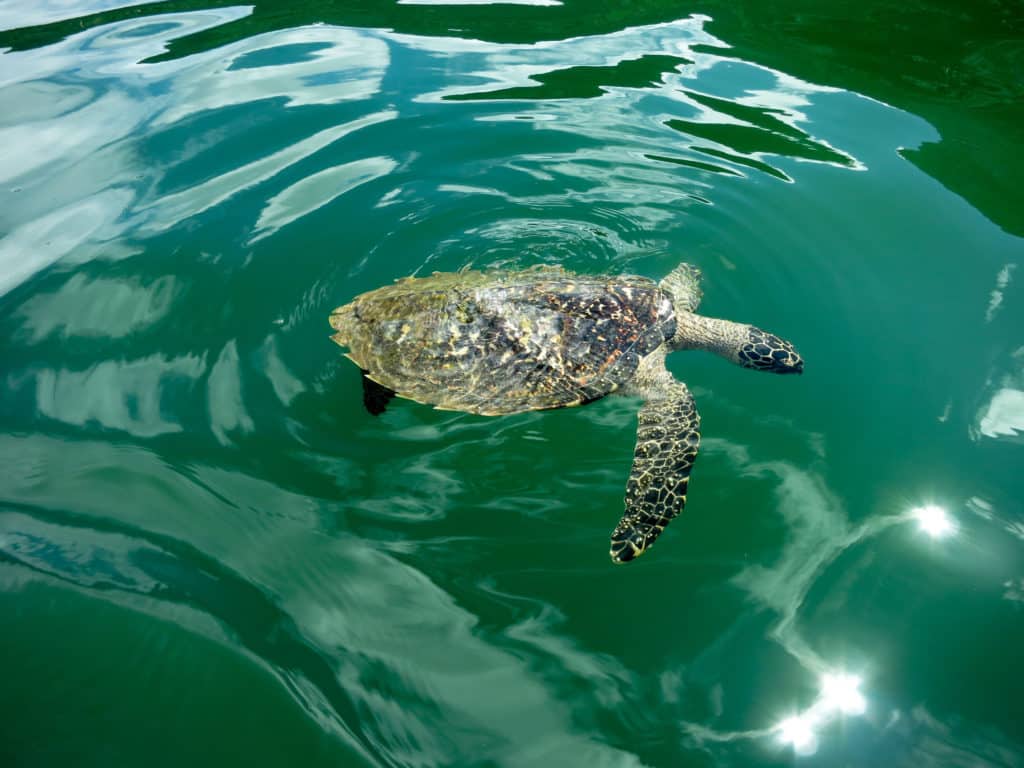
Mexico’s Pacific Ocean sparkled under a mid-April afternoon sky. The tranquil, soft breeze and gentle movement aboard our 41-foot Tartan ketch felt delightful. But Hotspur’s peaceful sail ended when Carolyne, our 13-year-old daughter, pointed to the water off the port side. “Look! It’s a sea turtle trapped under a bag!”
I scanned the stretch of cerulean blue but saw nothing. With the intense sunlight reflecting off the water, it could have been her eyes playing tricks. But Carolyne’s worried look and insistent pleas persuaded my husband, Jim, to alter course.
Jim started the engine as I furled the jib, and we motored toward the direction of the emergency. Idling, we approached a white, vinyl tarp floating on the surface. The tip of a brown flipper waved from underneath. “See! I told you!” Carolyne said as she grabbed a boat hook. We could see the shape of a round head move skyward and hear ragged attempts to breathe under the heavy weight of the tarp. Carolyne struggled to wrangle the wet cover from the animal’s back. Once the turtle’s face saw sunshine, it gulped down the fresh air in noisy rasps. Then, with a final deep breath, the turtle splashed and dived out of sight. We’d seen numerous sea turtles in our cruising adventures, but saving this one seemed paramount.
Last month in La Paz, Mexico, we learned how all sailors can become involved in saving sea turtles. Carolyne and a group of eager cruisers assisted marine biologists to help count sea turtles off Isla Espíritu Santo in the Sea of Cortez. While there, she learned about a program called Sea Turtle Spotter.
Sea Turtle Spotter is a citizen-science monitoring program. By downloading a free app that works offline, cruisers can record details on turtle sightings. Once Internet is available, syncing the data online can help marine biologists and researchers improve international conservation strategies.
“Cruisers are an obvious target for our program,” says Stephanie Rousso, wildlife biologist and founder of ProFaunaBaja, “because you’re out there seeing things we can’t.” Information compiled on the website helps scientists better understand sea turtle migration, food and habitat changes, and nesting sites. All sightings are important, according to Rousso.
Sea Turtle Spotter is a fun way for all ages to become involved in saving endangered marine turtles. And researchers aren’t just interested in sea turtle sightings in Mexico. “This is a global program,” Rousso says.
Jim and I still can’t explain how Carolyne spied that tarp with a desperate sea turtle trapped underneath. She not only rescued the turtle, but she also knew to retrieve the tarp.
For more information on becoming a Sea Turtle Spotter, go to profaunabaja.org or sign up for a free account at inaturalist.org.








